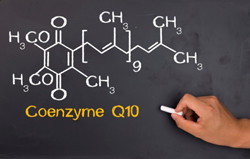The role of coenzyme Q10
CoQ10 is an oil-soluble compound that acts in the biochemical cascades in the power houses of the cell, the mitochondria. Generating energy in the form of adenosine triphosphate (ATP), 95 % of the human body's energy is produced as a result of the molecule. CoQ10 is also a powerful antioxidant. The genetic disorder causing CoQ10 deficiency is a result of a double dose of a recessive gene. Clinical symptoms due to malfunction of mitochondria are manifested through degenerative brain, muscle and kidney function. Some patients respond to CoQ10 supplements but not all. Previous work by a member of the 'Mouse model of CoQ deficiency: pathogenesis and treatment' (COQMITMEL) project identified the first mutation in decaprenyl-diphosphate synthase subunit 2 (PDSS2) gene associated with this deficiency. Further investigation of the faulty DNA code revealed that mitochondrial bioenergetics, increase in oxidative stress and defects in pyrimidine production are responsible for clinical symptoms. To clarify the disputed functions of CoQ and evaluate possible therapies for CoQ deficiency, COQMITMEL generated a knock-in mouse model with an inserted mutation in Coq9, a CoQ biosynthetic gene. Targeted gene insertion enabled the study of the effects of the new gene. Results indicate that Coq9 protein is necessary to have normal levels of Coq7 protein. The resulting CoQ10 deficiency on loss of Coq9 leads to a decrease in mitochondrial respiration and ATP synthesis. Dysfunction of mitochondria in the brain causes oxidative damage and programmed cell death. With an eye to potential therapies for mitochondrial encephalopathy due to CoQ deficiency, the researchers observed effects of two different forms of CoQ10. The reduced form, ubiquinol-10 was more efficient than the oxidised form, ubiquinone-10, in increasing the animal body weight and CoQ-dependent respiratory chain complexes activities. Moreover, oxidative damage was reduced in key areas of the brain and to a lesser extent in the brain stem. Project work has featured in 'Human Molecular Genetics' journal and BBA Molecular Basis of Disease. Ubiquinol-10 may enhance the efficacy of CoQ10 therapy as well as other neurodegenerative diseases and general ageing health issues. Pharmaceutical companies have shown interest in this data on ubiquinol-10. Data may also contribute to the goals of the International Rare Disease Research Consortium.







